When you pick up a bottle of generic medication, you assume it works just like the brand-name version. But what happens to that pill over time? Does it still work? Is it still safe? These aren’t just theoretical questions-they’re life-or-death concerns built into the science of stability and shelf life.
What Does "Stability" Actually Mean?
Stability isn’t just about a pill not falling apart. It’s about whether every active ingredient stays at the right strength, the medicine doesn’t turn toxic, and the form you take-tablet, liquid, inhaler-still works the way it should. The FDA defines it clearly: a product must keep its identity, strength, quality, and purity from the moment it’s packaged until the day it expires.This isn’t guesswork. Every drug, whether brand-name or generic, must pass strict stability tests before it hits the shelf. These tests track how the product changes under different conditions-heat, humidity, light, even air exposure. The goal? To find the point where the product no longer meets safety or effectiveness standards. That’s your expiration date.
How Degradation Happens-And Why It’s Dangerous
Drugs don’t just sit still. Over time, chemical reactions break them down. A painkiller might lose potency. An antibiotic might turn into something harmful. A liquid insulin might clump. These changes aren’t always visible. You can’t see a 5% drop in active ingredient with your eyes. But that drop could mean your blood pressure isn’t controlled, your infection isn’t cleared, or your seizure isn’t prevented.There are four main ways drugs degrade:
- Chemical degradation: Active ingredients break down into impurities. HPLC testing catches these. ICH guidelines say unknown impurities must stay below 0.1%. One FDA study found 17.3% of generic levothyroxine products had stability issues because their packaging didn’t block moisture as well as Synthroid.
- Physical degradation: Tablets crack, capsules soften, suspensions separate. For nanoparticle drugs-like those used in cystic fibrosis treatments-particles can clump above 200nm, making them useless. The whole point of tiny particles is to reach target cells. If they grow, they don’t work.
- Microbiological degradation: Bacteria or mold grow in liquid medicines or creams. USP standards say non-sterile products must have fewer than 100 colony-forming units per gram. A 2022 survey found 41.3% of recalls were due to preservative failure caused by water activity changes.
- Functional degradation: An inhaler might still spray, but not deliver the right dose. USP <4> requires metered-dose inhalers to deliver 90-110% of the labeled dose. If it’s outside that range, you’re under- or overdosing.
Testing Isn’t Just a Formality-It’s a Science
Companies don’t just wait years to see what happens. They use accelerated testing: storing products at 40°C and 75% humidity for six months to mimic years of aging. But here’s the catch: high heat doesn’t always predict real-world breakdown. One quality assurance professional lost $250,000 and 18 months because their accelerated test showed no problems-but at room temperature, the drug crystallized after 24 months. Why? A hidden polymorphic transition that only shows up slowly.Real-time testing is still the gold standard. Long-term studies run for 24 to 36 months. The ICH Q1A(R2) guidelines require testing at 0, 3, 6, 9, 12, 18, 24, and 36 months. And storage conditions? They can’t just say “room temperature.” The FDA cites companies for that. You must record exact temperatures-ideally between 20-25°C. A single 30°C day in a warehouse can start degradation.
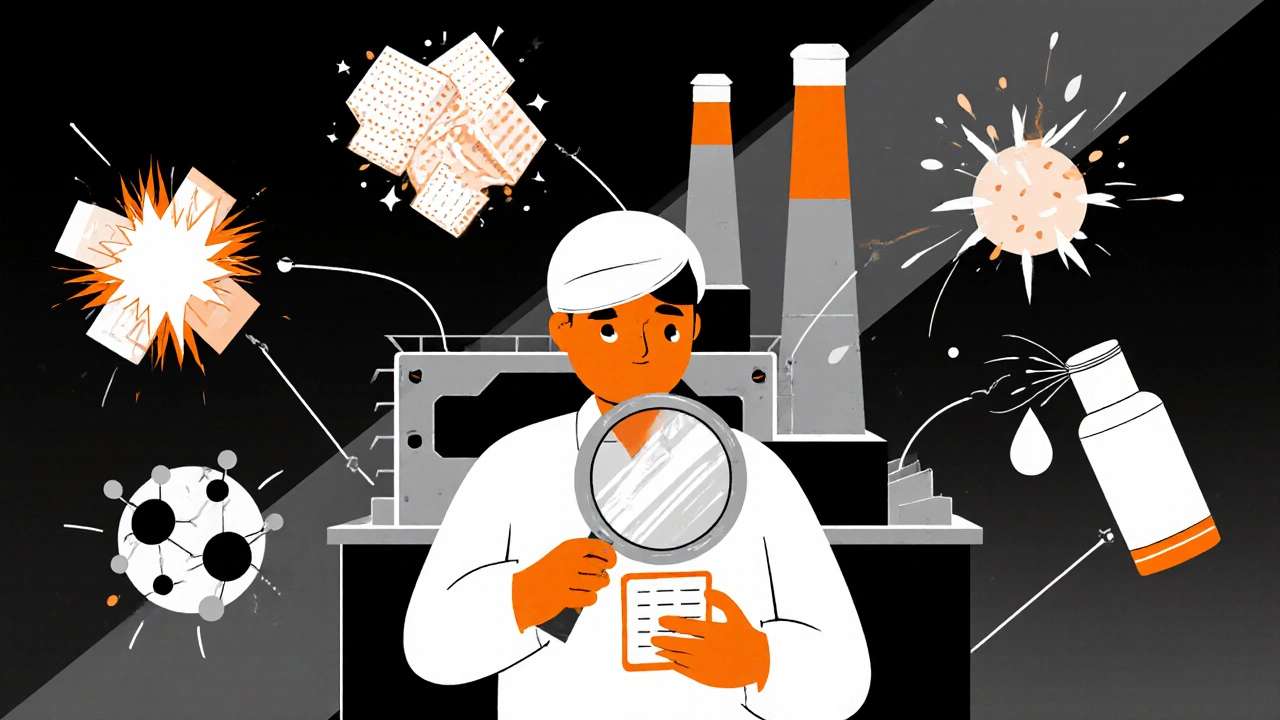
Generic Drugs Aren’t Always the Same
Generic drugs are cheaper because they don’t repeat expensive clinical trials. But they must prove they’re bioequivalent to the brand. That doesn’t mean they’re identical. Different fillers, coatings, or manufacturing methods can change how stable a drug is.Take levothyroxine. The brand Synthroid uses a moisture-resistant coating. Many generics don’t. Moisture causes the active ingredient to break down faster. That’s why some generic versions lost potency before their expiration date. The FDA flagged this in 2020. It’s not about quality control-it’s about formulation choices that affect shelf life.
Even packaging matters. A blister pack might protect better than a bottle. A dark glass vial blocks light better than clear plastic. These small differences can mean the difference between a 36-month shelf life and a 24-month one.
What Happens When Stability Fails?
Failure isn’t just a recall. It’s a public health risk. In low-income countries, 28.7% of medicines fail stability tests because they’re stored in hot, uncontrolled warehouses. In the U.S., 62.7% of stability professionals report at least one stability-related recall in the last five years. Most of those recalls happen because:- Storage logs were incomplete or inaccurate
- Testing didn’t include all degradation pathways
- Method validation was skipped or rushed
- Environmental controls weren’t monitored
One FDA warning letter cited a company for storing samples in a closet with no temperature log. Another had samples exposed to sunlight. Both were cited for violating 21 CFR 211.166. You can’t test what you don’t track.
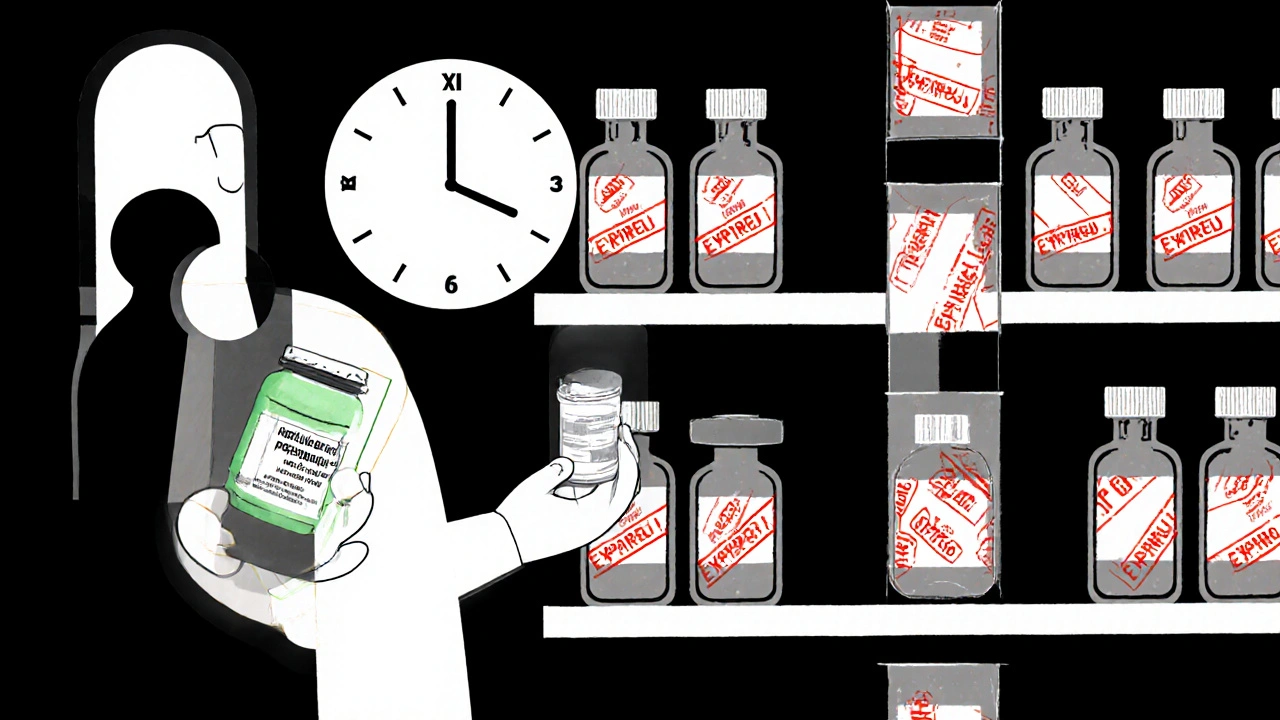
What’s Changing in Stability Science?
The industry is starting to move beyond old methods. The ICH Q12 guideline, effective November 2023, lets companies make changes to manufacturing or packaging after approval without restarting full stability studies-so long as they prove stability isn’t affected.Companies like Amgen and Merck are using Risk-Based Predictive Stability (RBPS) tools. These use data modeling to predict degradation faster. Pilot studies cut shelf-life determination time by 30%. But regulators are cautious. There’s no clear rulebook for what counts as an “acceptable alternative.”
Continuous manufacturing is another shift. Instead of making drugs in batches, they’re made in a constant flow. The FDA’s 2023 pilot showed shelf-life data could be generated 40% faster this way. And climate change? A 2022 MIT study predicts average drug shelf life could drop by 4.7 months by 2050 as warehouses get hotter.
What You Can Do
As a patient, you can’t test your meds. But you can protect yourself:- Store medications in a cool, dry place-not the bathroom or a hot car.
- Check expiration dates. Don’t use pills past that date, even if they look fine.
- Don’t transfer pills to pill organizers unless you know they’re moisture-proof.
- If a liquid medicine changes color, smells odd, or has particles, don’t use it.
- Ask your pharmacist: "Is this generic version known to have stability issues?" Some have been flagged.
Stability isn’t a backroom lab process. It’s the invisible guardrail between a medicine that works and one that doesn’t. The science is complex. The stakes are high. And for generic drugs-where cost cuts are common-stability testing is the last line of defense.
Can I still use expired generic medication?
The FDA says no. While some expired drugs may still be potent, there’s no guarantee. Degradation can create harmful compounds, or reduce effectiveness to dangerous levels. For life-saving drugs like insulin, epinephrine, or antibiotics, using expired versions risks serious harm. Never use expired medication unless directed by a healthcare provider in an emergency.
Why do generic drugs have different expiration dates than brand-name ones?
Because their formulations and packaging differ. Even if the active ingredient is the same, the fillers, coatings, or moisture barriers may not protect as well. A generic version might only be approved for 24 months while the brand lasts 36 months-not because it’s inferior, but because its stability data only supports the shorter period.
Does refrigeration always make drugs last longer?
Not always. Some drugs, like certain antibiotics or insulin, require refrigeration to stay stable. But others, like tablets, can break down faster if exposed to condensation. Always follow the label. If it says "store at room temperature," don’t refrigerate unless instructed. Humidity from the fridge can damage some formulations.
How do regulators know if a generic drug is stable?
Manufacturers must submit full stability data to the FDA or EMA before approval. This includes chemical, physical, and microbiological testing under real-time and accelerated conditions. The data must meet ICH Q1A(R2) standards. Regulators review the methods, batch sizes, storage logs, and results. If the data is incomplete or questionable, the application is rejected.
Are there any drugs that degrade faster than others?
Yes. Liquid medications, eye drops, insulin, and some antibiotics degrade faster than solid tablets. Drugs with high water content or sensitive molecules-like nitroglycerin or epinephrine-are especially vulnerable to heat, light, and air. Even exposure to humidity during packaging can shorten shelf life. Always check the specific storage instructions on the label.
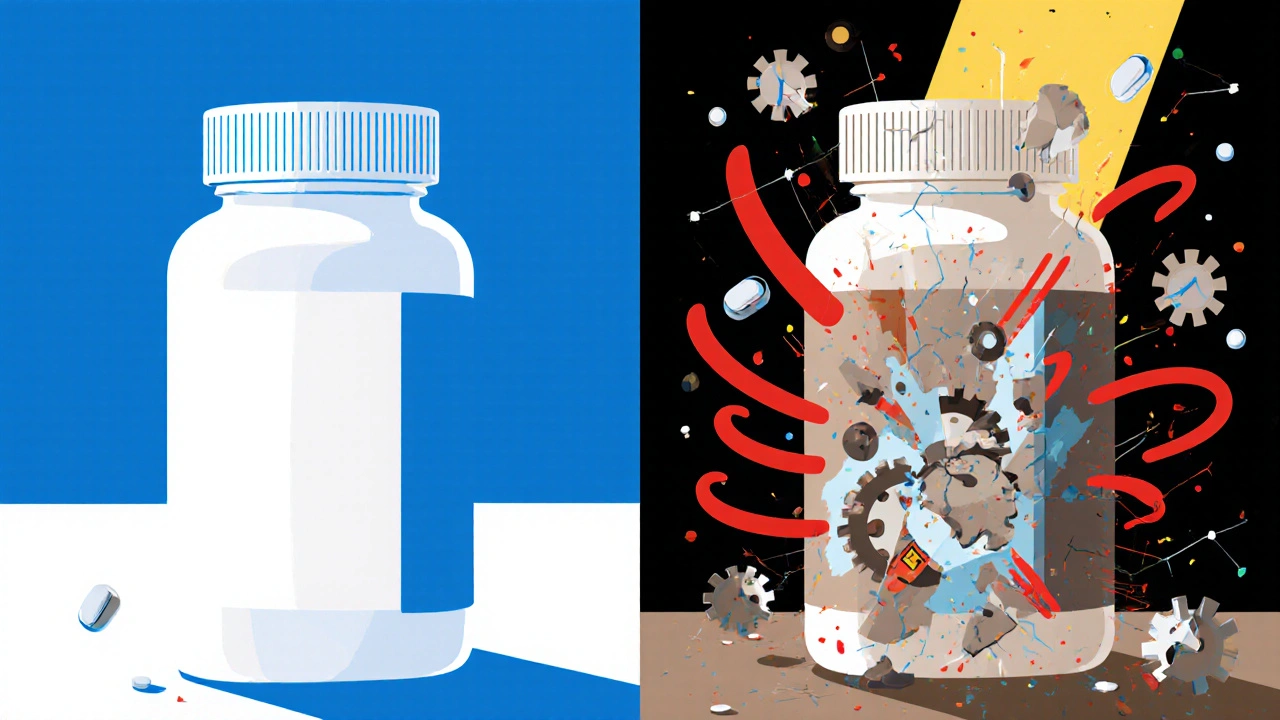
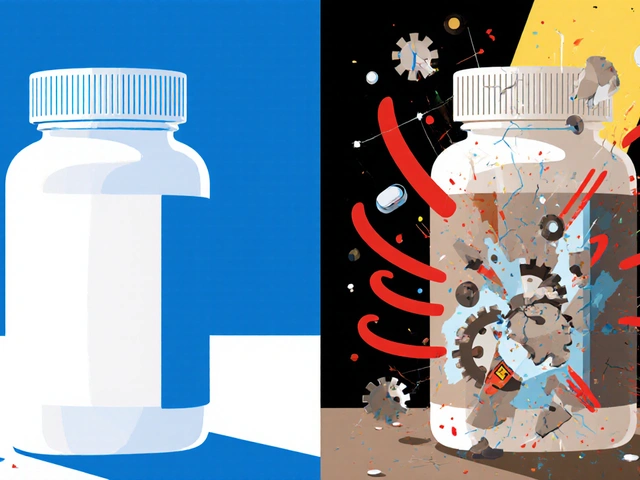

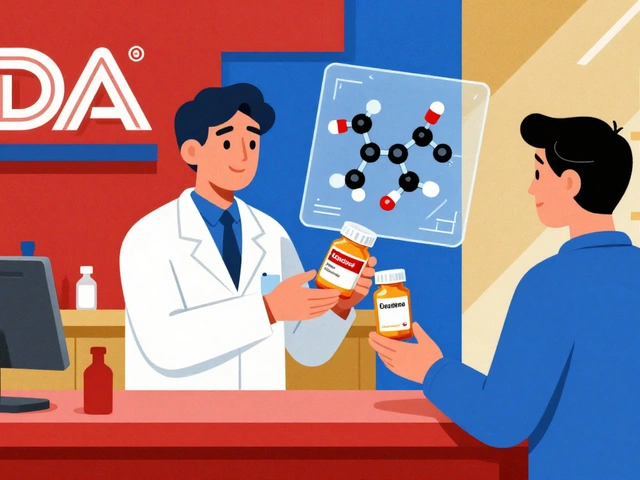

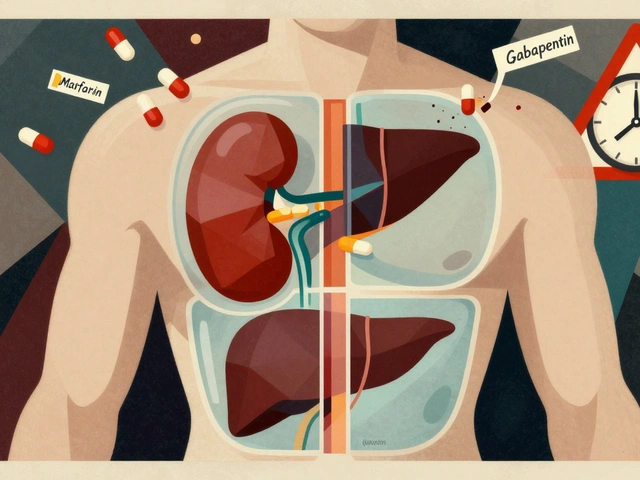
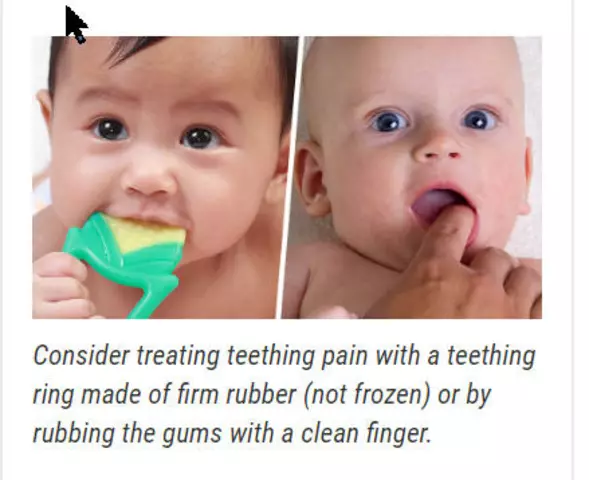
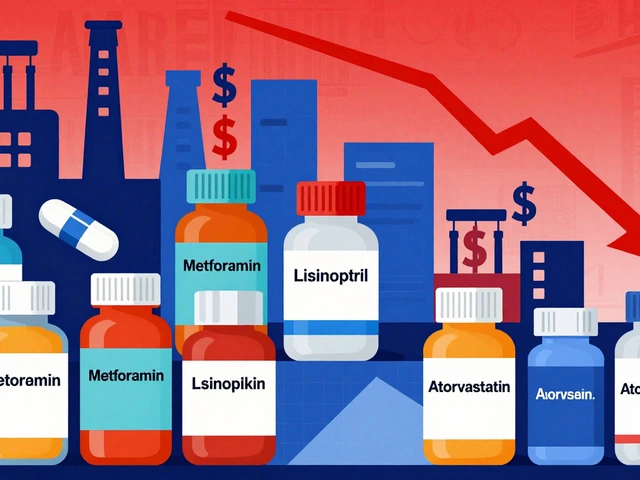
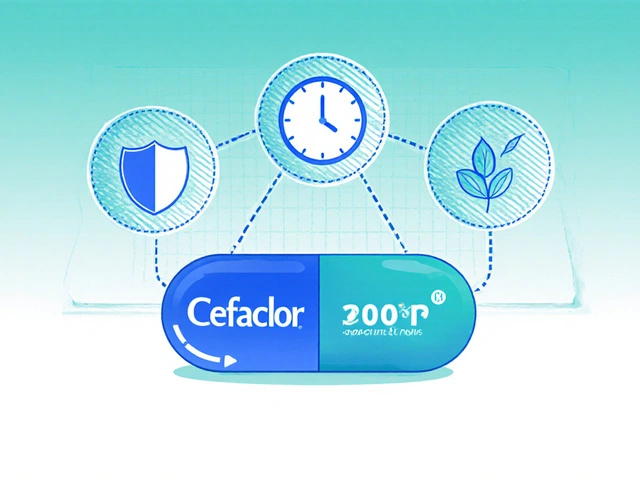

Brandy Walley November 23, 2025
generic meds are just fancy placebos anyway i took one for my anxiety and felt nothing then went back to brand name and boom instant chill who even needs science when you feel better
shreyas yashas November 24, 2025
this is actually super important and no one talks about it enough. i work in a pharmacy in mumbai and we see people taking expired generics all the time because they're cheaper. some of them are on lifelong meds like hypertension or thyroid. one guy came in with a 5-year-old bottle of levothyroxine because his village store said 'it still looks fine'. i had to explain to him that pills don't rot like bread. the science here is real and scary.
Suresh Ramaiyan November 26, 2025
there's something deeply human about trusting a little pill to keep you alive. we don't think about the years of testing, the humidity-controlled labs, the scientists watching vials age under fluorescent lights. but when that pill fails, it's not just chemistry-it's someone's heartbeat, their breath, their ability to hold their child. the fact that we treat life-saving medicine like a discount aisle item is tragic. maybe we need to stop calling them 'generic' and start calling them 'shared responsibility'.
Katy Bell November 27, 2025
i used to store my insulin in the bathroom cabinet because... well, it's convenient. then i read this and had a full existential crisis. now i keep it in a little cooler in my fridge with a sticky note that says 'DO NOT TOUCH THIS OR I WILL CRY'. also i never trust a pill organizer that isn't labeled like a NASA mission control panel.
Ragini Sharma November 27, 2025
so u mean my 3 year old generic advil might be turning into tiny poison fairies?? lol jk but also kinda not??
Linda Rosie November 28, 2025
The FDA's 21 CFR 211.166 is non-negotiable. Storage logs must be maintained with precision. Deviations compromise patient safety.
Vivian C Martinez November 29, 2025
you know what’s wild? the fact that we trust our lives to something we never test ourselves. i don’t check the battery life on my smoke detector until it beeps. i don’t inspect the tires on my car until they go flat. but i take pills every day and assume they’re still doing their job. maybe we should all be a little more curious. ask your pharmacist. read the label. don’t just swallow and move on.
Ross Ruprecht November 30, 2025
bro why are we even talking about this i just want my headache to go away
Bryson Carroll November 30, 2025
if you're taking generics you're already gambling with your life and pretending the FDA gives a damn. they approve this stuff based on data from labs that got their funding from the same company that made the brand name drug. and you think your 36 month shelf life means anything when your pharmacy lets it sit in a warehouse with no AC for 8 months? you're not a patient you're a statistic